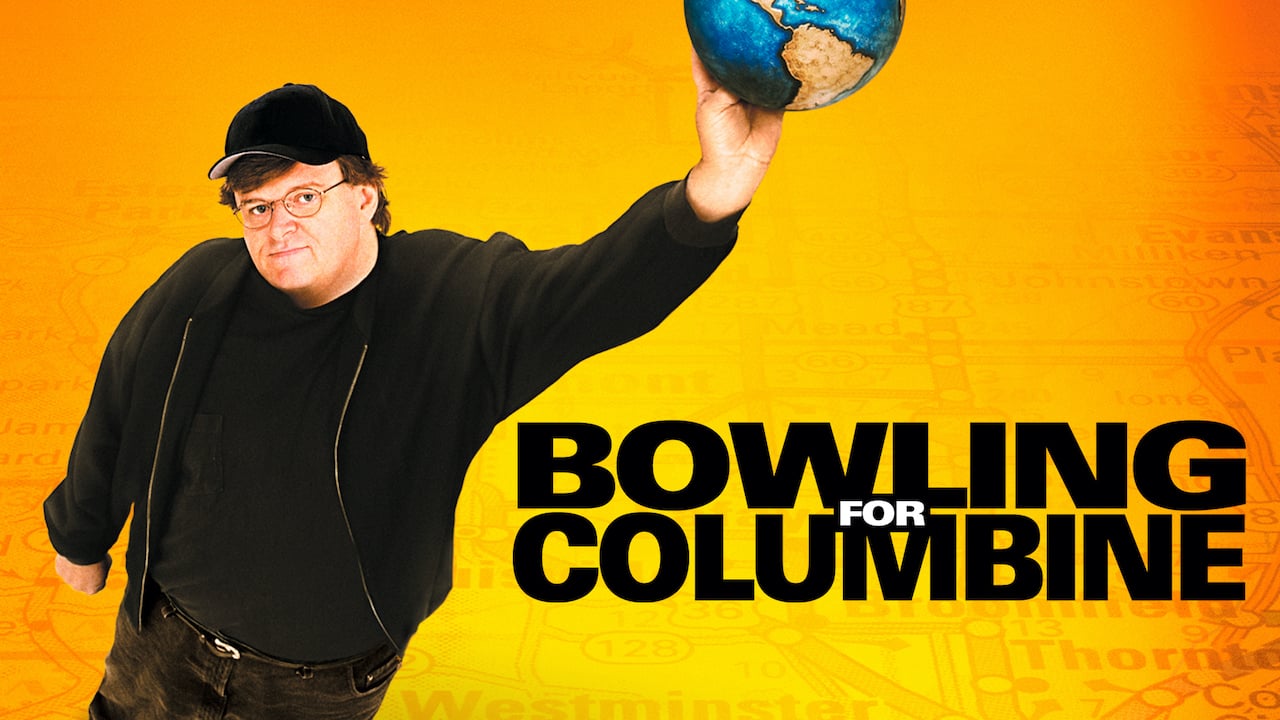Bowling for Columbine
Bowling for Columbine presents Michael Moore’s investigation into gun violence in America, focusing on the 1999 Columbine High School massacre and broader issues surrounding firearms in the United States. The film takes its name from the reported activity of Eric Harris and Dylan Klebold, who allegedly went bowling on the morning before carrying out their deadly attack at Columbine High School.
Moore begins by highlighting the ease of obtaining firearms in certain parts of the country, even demonstrating how he received a free gun simply by opening a bank account. He then introduces viewers to the Michigan Militia, a group that gained notoriety due to their connection with Timothy McVeigh and Terry Nichols, though the members insist they are merely focused on protecting their families.
The documentary shifts its focus to Littleton, Colorado, where the Columbine shooting occurred. Moore interviews local residents, including a representative from Lockheed Martin, the world’s largest weapons manufacturer, about the tragedy and its potential causes. He draws attention to the irony of a weapons producer questioning the roots of gun violence while contributing to its proliferation.
Moore’s central argument emerges as he explores the role of fear in American society and how it relates to gun violence. He suggests that the American government and media perpetuate a culture of fear, which in turn drives people to arm themselves, benefiting gun manufacturers and retailers. To illustrate this point, Moore compares the United States to other countries, particularly Canada, which has a high rate of gun ownership but significantly fewer gun-related deaths.
The film includes interviews with various figures, including actor Charlton Heston, then-president of the National Rifle Association. Moore confronts Heston about the NRA’s decision to hold rallies in Littleton and Flint, Michigan, shortly after tragic shootings in those communities.
In one of the documentary’s most memorable sequences, Moore takes two Columbine survivors to the headquarters of Kmart, where the shooters had purchased their ammunition. After persistent efforts, they succeed in convincing the company to phase out the sale of handgun ammunition in their stores.
Bowling for Columbine employs a variety of filmmaking techniques, including interviews, archival footage, and even an animated segment detailing the history of violence in America. Throughout the film, Moore challenges common explanations for gun violence, such as violent media or video games, and instead points to deeper societal issues like inequality and the prevalence of fear.










